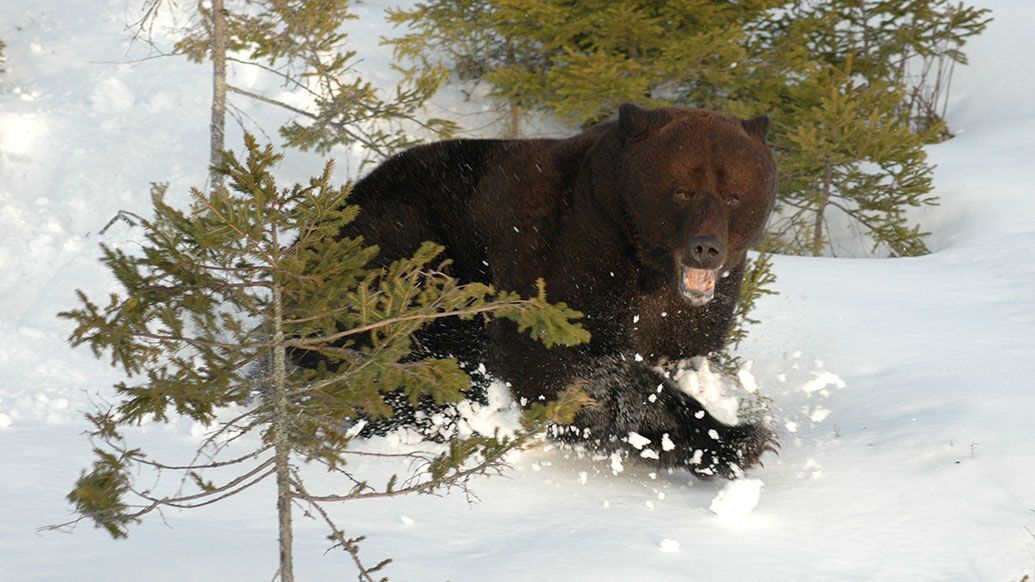- Affiliation:
-
Faculty of Applied Ecology, Agricultural Sciences and Biotechnology
- Academic discipline:
-
Nature, biology and environment

Part of the research has been to map lead levels in the blood of bears.
Projects range from improvements to and evaluations of capture methods, stress related to hunting and disturbance and basic physiology research to elucidate mechanisms related to all life stages.
We also host a large, interdisciplinary research project on the causes and consequences of environmental lead exposure in scavengers.
What we research
Our group has five main areas of research within the area of wildlife management and applied ecology: Ecophysiology, Animal welfare and effects of research activities, Exposure to environmental toxins with a focus on lead and hunting, wound ballistic and animal welfare
More about the research group
Main areas
Our group has five main areas of research within the area of wildlife management and applied ecology:
Ecophysiology:
with a focus on environmental and physiological drivers of animal ecology, including how environmental conditions, physiology and body size determine hibernation and active season phenology in brown bears. Our current work also includes physiological drivers of reproduction, migration and anthropogenic effects on moose energetics, reproduction phenology in several species, seasonal variation in physiological traits, and physiological responses to climatic and environmental differences (for example, beavers in areas with and without ice, how berry availability affects phenology in bears, and other topics. These species we work with include brown bears (Sweden), Asiatic black bears (Japan), moose (Sweden), musk oxen (Alaska and Greenland), Svalbard reindeer (Norway), Beavers (Norway), wolverine (Sweden) and sheep (Norway).
Animal welfare and effects of research activities:
Our group has been leading in the field of free-ranging wildlife anaesthesia, we are expanding this work to look at long-term effects of collaring including ecophysiological and life-history effects. We have several ongoing and student topics within this topic. These projects include wild boar (france), bison (Sweden), muskox (Sweden), moose (Sweden), beavers (Norway), blood pressure (Sweden). We are also working on long-term effects of captures in wolves (Norway/Sweden), bears (Sweden), Svalbard reindeer (Norway) and moose (Norway).
Exposure to environmental toxins with a focus on lead:
New project on lead in bears including collaboration with Alaska, Canada, Croatia, Poland, and Japan.
Hunting, wound ballistic and animal welfare:
Collaborative work:
Contributing our expertise to other projects including skandulv, skogjerv, SBBRP, beyond moose, Svalbard reindeer. This includes both participation in external projects and contract work.
Translational medicine:
The modern life of humans in western societies is characterized by lack of exercise and an unhealthy diet with a high carbohydrate and starch intake, causing the so-called “metabolic syndrome”. This syndrome, combined with a lack of physical activity, may result in a variety of life -threatening medical problems including obesity, diabetes, loss of muscle mass, hypertension and cardiovascular disease.
We put Man on the Moon more than 40 years ago and there are spaceships that can make it to Mars in less than nine months. Scandinavian brown bears live an apparently “unhealthy” life. They add 30-40 % body mass as fat every summer and fall, mainly from sugar-rich berries, adding a lot of “belly fat” and causing high levels of “bad” cholesterol and triglycerides in the blood. Then they stop exercising for 6-7 months because they hibernate in a den during the entire winter.
The bears, however, don’t develop bed sores, muscle atrophy, osteoporosis, blood clots, diabetes or cardiovascular diseases like inactive humans on high carb diets. They repeat this unhealthy lifestyle every year of their entire life without any signs of ill effects. We don’t know why, but obviously, the bears have evolved physiological mechanisms to cope with this difficult life. If we can better understand the physiology and metabolic pathways of hibernating bears, we might be able to understand the underlying mechanisms of modern human diseases and develop treatments and drugs to improve human health.
Contact the research group



